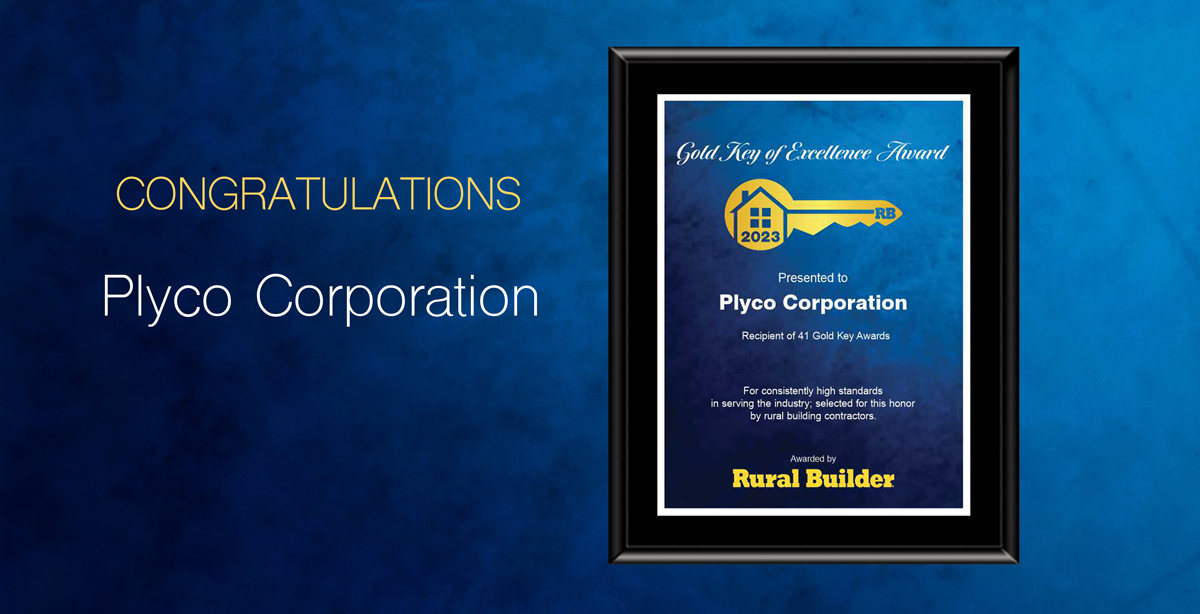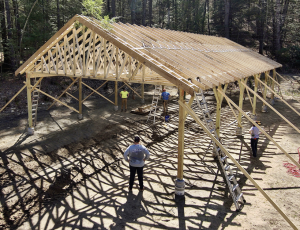When discussing the energy efficiencies of walk doors in post frame or “red iron” metal buildings, many people assume there is not much of a differentiation between door types and therefore little thought is done for the entry doors. In other words, the thinking is that most doors are very similar in construction, gauges, and door cores, so there is no need to look at performance or tested data results.

Plyco has historically been very aggressive for third party testing and registration for many of its doors. In more recent times, due to energy costs and clean climate objectives, a greater emphasis is now on thermal performance. This makes sense — every building owner or homeowner should be concerned about the insulating properties of the building envelope.
Those that do look at each category in more detail find ways to provide higher performing products and walk doors are no different. The starting point for door would be the door panel itself. Common exterior doors use a styrene core which has an R value of 4 to 6. Better or “best” doors will have a poured in place polyurethane core, which because of it being liquid at the time of application fills all the door cavities and ultimately typically more than doubles the R value to about 12. But that is only a portion of the story. The weather seal, threshold/sweep, and “fit” will also play a big role in the amount of air or water infiltration. All of this is captured in much greater way with the NFRC 100 testing for the entire door system, which also provides a much better indication of real-world results.
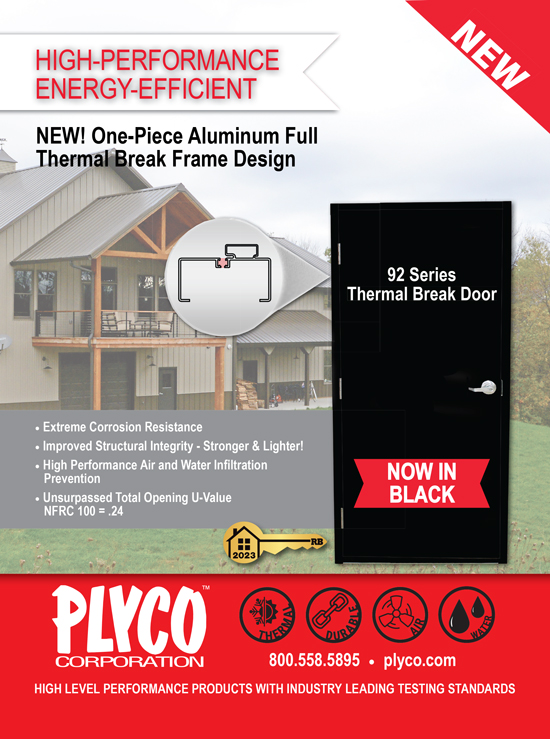
Why is this more comprehensive U value important? Well, you can quantify the impact of higher U values when using high performance windows and doors. The U value of the NFRC 100 testing is the value that can be used in RESCHECK and COMCHECK for the building envelope. For example, using ASHRAE 90.1-2016 for climate zone 5, the prescriptive U value for walls is 0.050 and for doors it’s 0.68. There are several variables to input that will adjust results but in general, using a 0.24 U value for the Plyco 92 Series thermal break door system, the benefit of just (2) doors in a 15′ x 100′ wall could generate the reduced need for wall insulation by 34%. So there could be significant cost savings on the front end, but maybe more importantly leaving the initial R value insulation in place, the energy efficiency of the building is substantially increased.
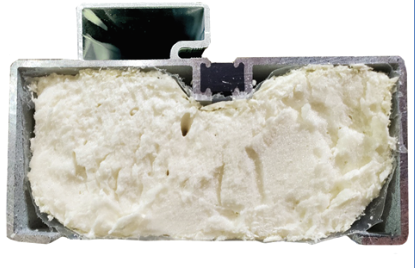
How does the Plyco 92 door achieve such high tested U values? The 92 door has an “Everlast” G60 galvanized, pre-painted steel door panel with a poured-in-place polyurethane core, along with a heavy extruded full aluminum “storefront” type of frame. The door, frame, and threshold all have a “true” polyurethane thermal break barrier which provides the basis for the tremendous U values.
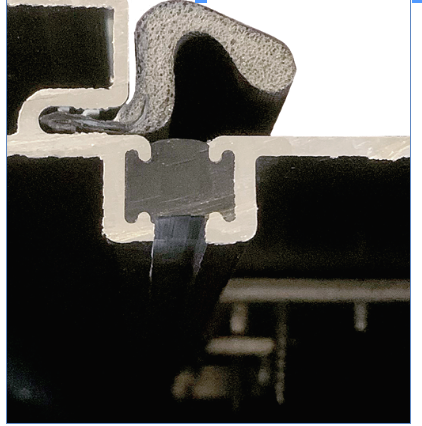
(The Plyco 92 series thermal door system is now available in Black utilizing “Cool Solar Reflective Technology” to further enhance the door quality and building performance.)
In summary: the world of energy efficiency of doors can be a bit complicated. Testing and performance level minimums are a good starting point to ensure basic structural requirements are met. Then the energy efficiencies gained through highly engineered products — especially those with a thermal break door and frame — that provide strong U values are becoming more and more necessary. More information can be provided by contacting Tom Granitz at [email protected]. RB


